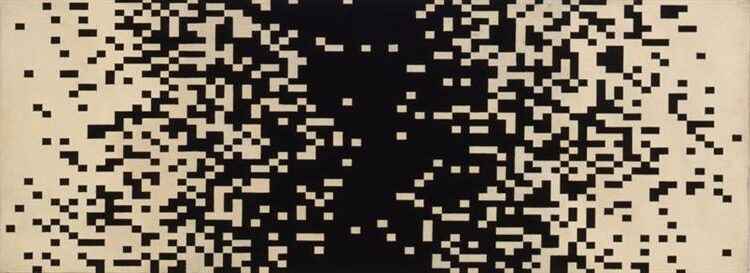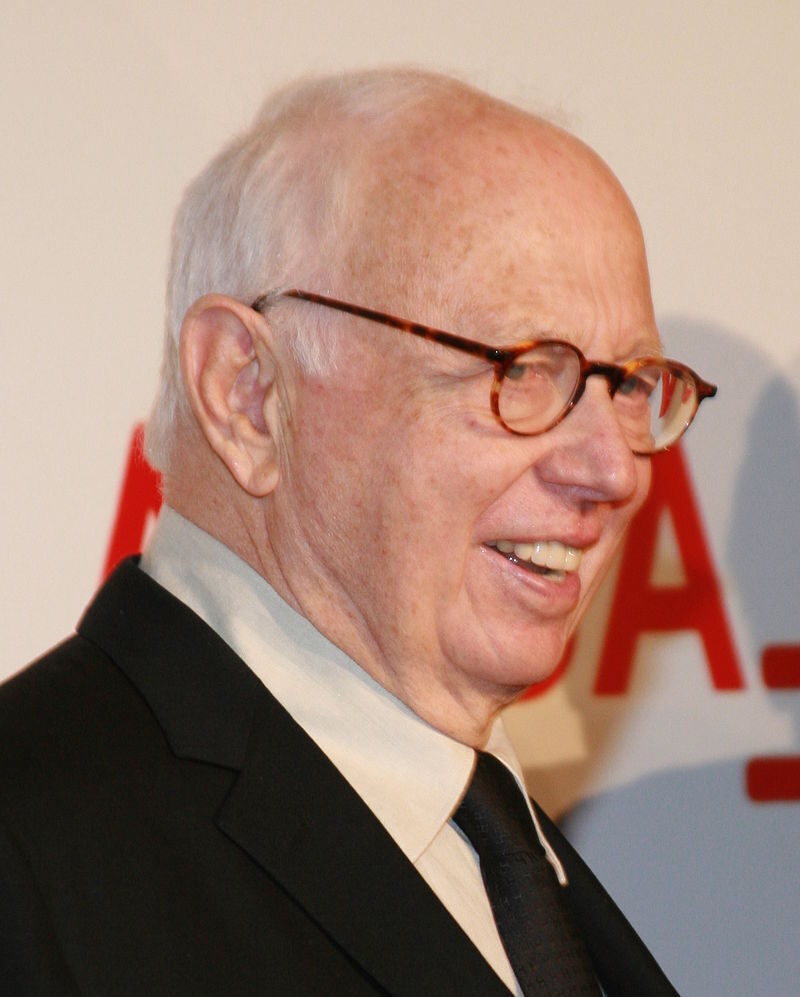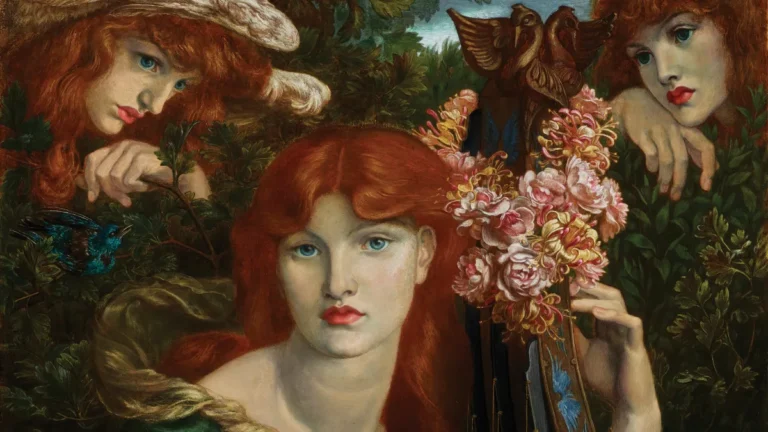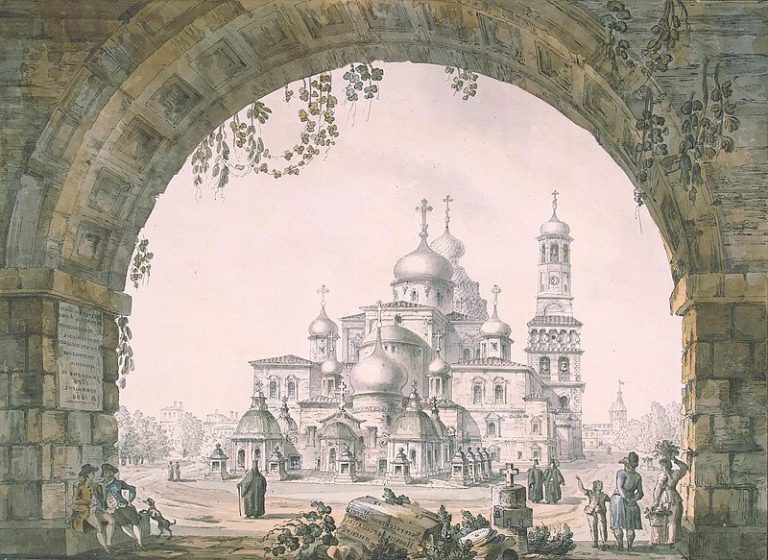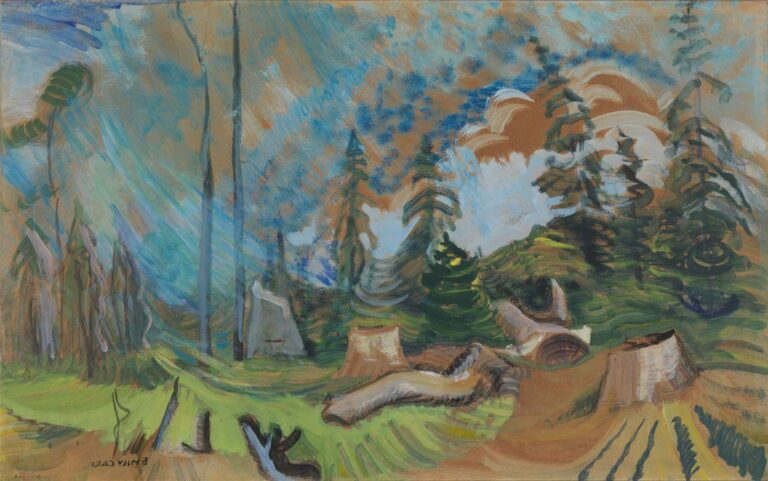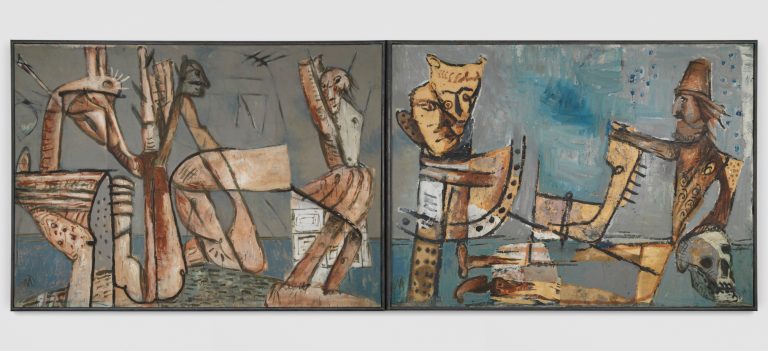Ellsworth Kelly: Pioneering American Abstract Painter and His Enduring Legacy
Born: May 31, 1923, Newburgh, New York, U.S.
Death: December 27, 2015, Spencertown, New York, U.S.
Art Movement: Post-Painterly Abstraction, Minimalism
Nationality: American
Influenced By: John James Audubon
Institution: École nationale supérieure des Beaux-Arts, School of the Museum of Fine Arts
Ellsworth Kelly: Pioneering American Abstract Painter and His Enduring Legacy
Life and Career of Ellsworth Kelly
Ellsworth Kelly’s artistic journey spanned over seven decades. During this time, he established himself as one of America’s most important abstract painters, sculptors, and printmakers. His career was marked by a distinctive approach to color, shape, and form that revolutionized abstract art.
Early Years and Education
Ellsworth Maurice Kelly was born on May 31, 1923, in Newburgh, New York. He spent most of his childhood in New Jersey, where his early interest in nature and bird watching influenced his later artistic sensibilities.
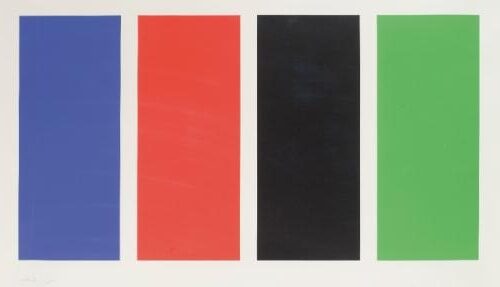
Four Panels, 1971, by Ellsworth Kelly
Kelly’s formal art education began at Pratt Institute in Brooklyn in 1941. However, his studies were interrupted when he was drafted into the U.S. Army during World War II. After the war, Kelly continued his education at the School of the Museum of Fine Arts in Boston from 1946 to 1947.
His educational path was shaped by a strong interest in European modernism. Kelly was particularly drawn to the works of Pablo Picasso and Henri Matisse, whose influence would later be evident in his own artistic style.
World War II Influence
World War II played a crucial role in shaping Kelly’s artistic vision. From 1943 to 1945, he served in the U.S. Army’s camouflage unit known as “The Ghost Army.” This specialized unit created inflatable tanks and used sound effects to deceive enemy forces.
Kelly’s experience in camouflage work exposed him to the principles of concealment, visual deception, and the relationship between form and environment. These concepts would later inform his artistic practice.
During his military service, Kelly was stationed in France, which gave him his first exposure to European art and culture. This experience sparked his interest in French artistic traditions and inspired his decision to return to Paris after the war.
Parisian Artistic Development
In 1948, Kelly moved to Paris with support from the G.I. Bill. His six years in France were transformative for his artistic development. While in Paris, he distanced himself from the dominant American abstract expressionist movement.
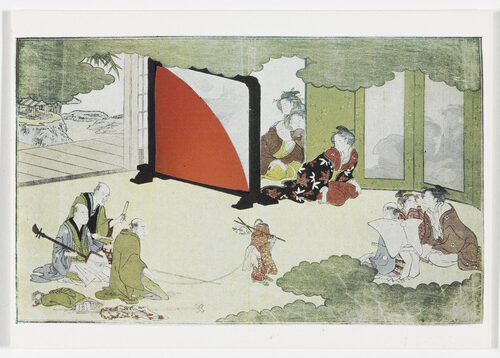
Autumn (Red Curve), 1984, by Ellsworth Kelly
Kelly found inspiration in the city’s architecture, plants, and shadows. He began developing his distinctive approach to abstraction, focusing on bold colors and simplified forms. During this period, he abandoned traditional canvas formats and began creating shaped canvases that blurred the line between painting and sculpture.
His first solo exhibition was held at Galerie Arnaud in Paris in 1951. Though he struggled for recognition in Paris, these years were essential in developing his unique artistic voice that combined European modernism with American innovation.
Return to New York
Kelly returned to New York in 1954, finding an art scene more receptive to his minimalist aesthetic than Paris had been. He brought with him a mature artistic vision characterized by hard-edge painting and color field techniques.
His first New York exhibition at the Betty Parsons Gallery in 1956 marked the beginning of his rise to prominence in American art. Throughout the 1950s and 1960s, Kelly refined his distinctive style of bright color panels and precisely defined shapes.
In 1970, Kelly moved to Spencertown, New York, where he established a studio that would serve as his creative base for the rest of his career. His work during this period expanded to include large-scale sculptures for public spaces, further cementing his reputation as a versatile artist.
Final Years and Legacy
In his later years, Kelly received numerous accolades, including the National Medal of Arts in 2013. He continued to create groundbreaking works well into his 90s, maintaining his commitment to pure form and color.
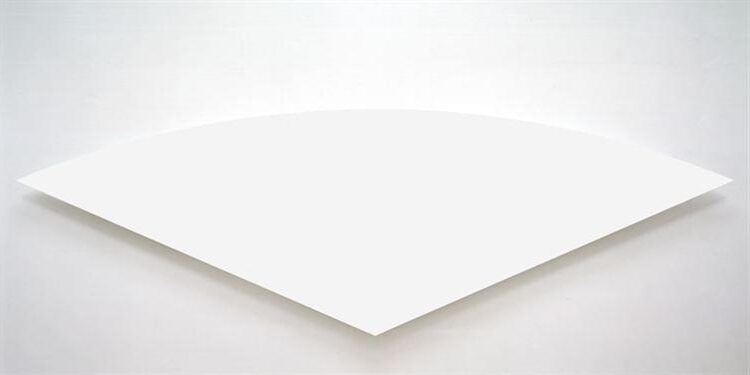
White Curve, 1974, by Ellsworth Kelly
The Ellsworth Kelly Foundation, established in the 1990s, works to preserve his artistic legacy and support arts education. His final project was a chapel-like structure titled “Austin,” completed posthumously at the University of Texas.
Kelly died on December 27, 2015, at the age of 92. His centennial celebration in 2023 renewed interest in his contributions to abstract art. Today, his works are held in major museum collections worldwide, including the Museum of Modern Art and the National Gallery of Art.
Artistic Style and Major Works
Ellsworth Kelly developed a distinctive artistic approach that focused on bold colors, simple shapes, and precise geometry. His work spans multiple mediums including painting, printmaking, and sculpture, with each piece reflecting his interest in the relationship between form, color, and space.
Evolution of Abstract Art
Kelly’s journey toward abstraction began during his time in Paris after World War II. While popular American artists were creating abstract expressionist works filled with emotion and gesture, Kelly moved in the opposite direction. He developed a more restrained approach that would later be associated with hard-edge painting and Color Field painting.
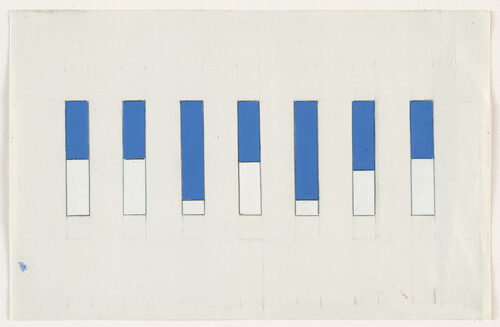
Awnings, Avenue Matignon, 1950, by Ellsworth Kelly
His early abstract works were inspired by everyday observations—shadows on stairs, reflections in water, or the shapes of leaves. “Window, Museum of Modern Art, Paris” (1949) marks an important turning point in his career, where he began to distill what he saw into pure geometric forms.
Kelly rejected emotional expression in favor of visual clarity and simplicity. This approach set him apart from his contemporaries and established him as a pioneer of post-painterly abstraction.
Experimentation with Color and Form
Kelly’s work is immediately recognizable for its bold use of color and distinct forms. He often created monochromatic canvases or juxtaposed two or three vibrant colors in a single piece. His color choices were deliberate and precise, with each hue carefully selected for its visual impact.
A hallmark of Kelly’s style was his use of irregularly shaped canvases. Rather than confining his paintings to traditional rectangles, he created works that were themselves shapes—triangles, curves, or multi-panel arrangements. This approach blurred the line between painting and sculpture.
Kelly often worked in series, exploring variations on a theme. His plant drawings, for example, show his ability to reduce complex natural forms to elegant, simplified lines. These experiments with shape and form challenged conventional ideas about what constituted a painting.
Notable Paintings and Sculptures
Among Kelly’s most celebrated works are his large-scale color panel paintings. “Spectrum IV” (1967) features 13 joined panels, each a different color, creating a stunning rainbow effect. His “Red Blue Green” (1963) uses bold primary colors in precisely arranged panels to create visual tension and harmony.

Red Blue Green, 1963, by Ellsworth Kelly
“Colors for a Large Wall” (1951) represents Kelly’s early approach to multi-panel works—64 arranged squares of various colors that appear random but were carefully composed. This piece established his commitment to geometric abstraction.
The “Chatham Series” (1971) includes 14 inverted L-shaped canvases, each with two contrasting colors divided by a diagonal line. These works demonstrate Kelly’s mastery of shape and color relationships.
His plant-inspired works like “Plant II” showcase his ability to capture natural forms with minimal lines while maintaining their essential character.
Printmaking and Lithographs
Kelly was an accomplished printmaker who produced over 400 prints throughout his career. His lithographs, like his paintings, feature bold colors and precise shapes. He frequently collaborated with the renowned print workshop Gemini G.E.L. in Los Angeles.
The “Suite of Plant Lithographs” (1964-1966) translates his elegant plant drawings into print form. These works highlight his ability to reduce complex forms to their essential lines while maintaining visual impact.
Kelly’s printmaking style evolved over time, but always maintained his signature clarity and precision. His prints often relate to his paintings but stand as important works in their own right.
His lithographs are particularly notable for their exceptional color quality and precision. The technical challenges of printmaking suited Kelly’s methodical approach to art-making.
Sculpture Garden and Public Installations
Kelly extended his artistic vision to three-dimensional works and public spaces. His large-scale outdoor sculptures maintain the same geometric purity and color focus as his paintings. These works interact with natural light and their surroundings, changing throughout the day.

Red Yellow Blue White, 1952, by Ellsworth Kelly
“Curve XXII” (1981) is a massive steel sculpture that demonstrates his interest in simple forms at monumental scale. The “Austin” (2015) chapel at the Blanton Museum of Art represents his final and perhaps most ambitious project—a stone building with colored glass windows that transform light into pure color.
Kelly created numerous public installations throughout his career. His “Totem” sculptures are tall, slender forms that rise dramatically upward, while his wall-mounted sculptures extend his exploration of shape into three dimensions.
His sculptures maintain the same joy in form and color that characterizes all his work, translated into physical space that viewers can move around and experience from multiple perspectives.
Exhibitions and Collections
Ellsworth Kelly’s work has been featured in prestigious museums and galleries worldwide, with major exhibitions celebrating his distinctive approach to form and color. His art continues to be displayed in permanent collections at leading institutions, and his final masterpiece, the Austin Chapel, stands as a testament to his architectural vision.
Prominent Museum Exhibitions
The Museum of Modern Art (MoMA) has honored Kelly with several exhibitions, including “Ellsworth Kelly: A Centennial Celebration” marking his 100th birthday. This showcase highlighted his significant contributions to abstract art through his bold use of colors and shapes.

Winter (Black Curve), 1984, by Ellsworth Kelly
LACMA presented “Ellsworth Kelly: Prints and Paintings,” the first comprehensive examination of his print work since 1988. This exhibition revealed the relationship between his paintings and prints, demonstrating his consistent artistic vision across mediums.
In 2022, the exhibition “Monet | Kelly” at the Clark Art Institute explored the influence of Claude Monet on Kelly’s artistic development. This unique pairing showed how Kelly’s time in Paris shaped his future direction.
SFMOMA’s “Ellsworth Kelly in San Francisco” brought together twenty-two major works acquired from the artist’s personal collection, offering visitors an intimate look at pieces the artist himself had kept.
Permanent Collections and Galleries
The National Gallery of Art in Washington, DC houses a significant collection of Kelly’s work, including pieces from his early Paris period through his later New York years. His famous “Colors for a Large Wall” (1951) exemplifies his unique approach to color and geometry.
The Philadelphia Museum of Art and Museum of Fine Arts Boston both maintain important Kelly collections, displaying his paintings, sculptures, and drawings. These institutions have helped cement his legacy as a pioneer of minimalism and color field painting.
Matthew Marks Gallery has represented Kelly’s work for decades, showcasing how his innovations of the 1940s and 1950s reshaped abstract art. The gallery continues to exhibit his work posthumously, keeping his artistic vision alive.
Collections in New York and along the Hudson River, where Kelly spent his later years, hold special significance as they connect to the landscape that inspired many of his later works.
The Austin Chapel Project
“Austin” is Kelly’s final masterpiece, completed in 2018 at the Blanton Museum of Art in Texas. This 2,715-square-foot stone building serves as both artwork and contemplative space, embodying Kelly’s architectural vision.
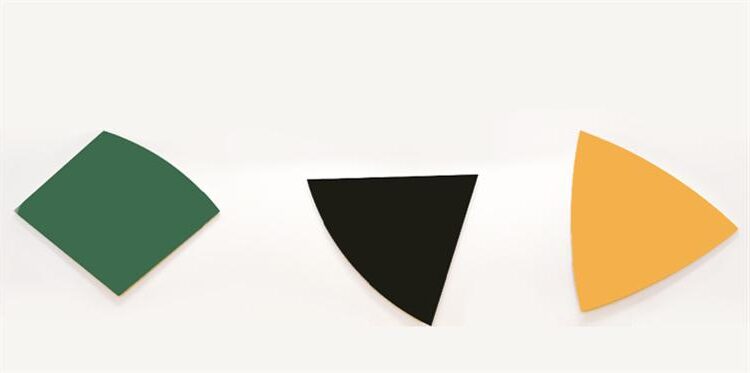
Three Panels: Orange, Dark Gray, Green, 1986, by Ellsworth Kelly
The chapel features colored glass windows, black and white marble panels, and a wooden totem sculpture, all designed by Kelly. The project began in 2015, and while Kelly did not live to see its completion, he oversaw every aspect of its design.
The building displays Kelly’s signature elements: geometric precision, vibrant colors, and a strong relationship with natural light. Sunlight filters through the colored glass windows, creating shifting patterns throughout the day that transform the interior space.
“Austin” stands as Kelly’s only building, bringing together his lifelong artistic explorations into a permanent, immersive environment that visitors can physically enter and experience from within.
Frequently Asked Questions
Ellsworth Kelly’s artistic legacy continues to spark curiosity among art enthusiasts and collectors. His distinctive approach to color, form, and space has made him one of the most influential abstract artists of the 20th century.
What are the characteristics of Ellsworth Kelly’s artistic style?
Ellsworth Kelly’s style is characterized by bold, vibrant colors and simple geometric shapes. He often worked with flat, monochromatic forms that emphasized the relationship between figure and ground.
Kelly eliminated all representational elements, focusing instead on pure form and color. His works feature clean lines, sharp edges, and precise compositions that create visual impact through simplicity.
His distinctive shaped canvases broke away from traditional rectangular formats, blurring the line between painting and sculpture. Kelly’s work evokes a sense of joy through color relationships and spatial arrangements.
How did Ellsworth Kelly contribute to the development of abstract art?
Kelly pioneered a form of hard-edge abstraction that moved away from the gestural approaches of Abstract Expressionism. His minimalist aesthetic helped establish Color Field painting as a significant movement in the 1950s and 1960s.
He bridged European abstraction with American art, bringing influences from his time in France to the New York art scene. Kelly’s focus on perception and the viewer’s experience helped shift abstract art toward a more objective approach.
His innovative use of shaped canvases challenged conventional boundaries between painting and sculpture. This exploration influenced generations of artists working with dimensional color and form.
What techniques and materials did Ellsworth Kelly commonly use in his artworks?
Kelly typically worked with oil paint on canvas. He applied color in smooth, flat surfaces without visible brushstrokes. He also created numerous works using acrylic paint, particularly in his later career.
For his shaped canvases, Kelly employed carefully constructed stretchers that followed his precise geometric designs. He often used templates and careful planning to achieve the exact forms he envisioned.
Kelly was also a prolific printmaker. He created lithographs, screenprints, and etchings that translated his visual language to paper. His sculptural works frequently utilized aluminum, steel, or bronze painted in bold, monochromatic colors.
Can you provide an overview of Ellsworth Kelly’s most influential periods or series?
Kelly’s early Paris period (1948-1954) saw him developing his abstract vocabulary through collages and grid-based compositions. His “Spectrum” series from the 1950s explored color relationships through sequences of panels arranged in specific orders.
The “Shape as Form” period in the 1960s introduced his revolutionary shaped canvases that rejected the traditional rectangle. During the 1970s and 1980s, Kelly created his “Curve” series, exploring organic forms derived from natural observations.
His later work included large-scale public sculptures and the “Austin” chapel, completed posthumously in 2018 at the Blanton Museum of Art. This final major project synthesized his lifelong artistic explorations into an immersive architectural space.
Where can collectors find authenticated Ellsworth Kelly artworks for sale?
Major auction houses like Christie’s, Sotheby’s, and Phillips regularly feature Kelly’s work in their contemporary art sales. Established galleries that represented Kelly during his lifetime, including Matthew Marks Gallery, continue to offer secondary market works.
Art fairs such as Art Basel, Frieze, and TEFAF showcase Kelly pieces through participating galleries. Online platforms like Artsy and Artnet provide access to Kelly’s work through their marketplace networks of verified dealers.
For prints and editions, specialized print dealers and galleries often maintain inventories of Kelly’s graphic works. The Ellsworth Kelly Foundation can assist with questions regarding authentication of works.
What are some key factors that affect the valuation of Ellsworth Kelly’s paintings in the art market?
Size and scale significantly impact Kelly’s market values. Larger works generally command higher prices.
Rarity and historical significance play crucial roles. Pieces from pivotal series or periods attract premium valuations.
Provenance and exhibition history enhance value, particularly for works shown in major retrospectives or from prestigious collections.
Condition is paramount. Kelly’s precise geometric forms and flat color fields make damages or restoration more noticeable.
Medium affects pricing, with unique paintings typically valued higher than prints or editions.
Color composition can influence desirability. Certain color combinations or particularly vibrant works often generate stronger market interest.

